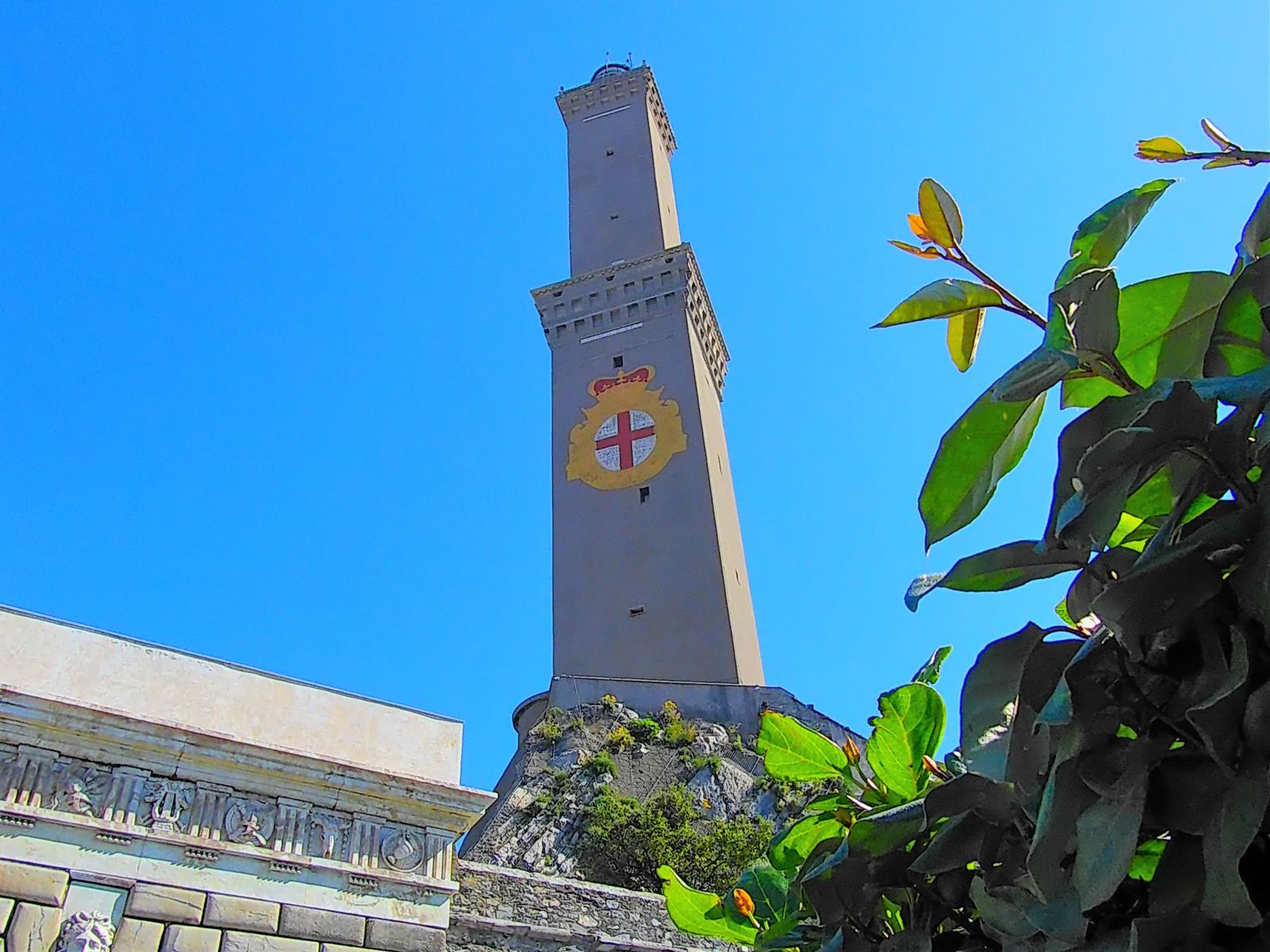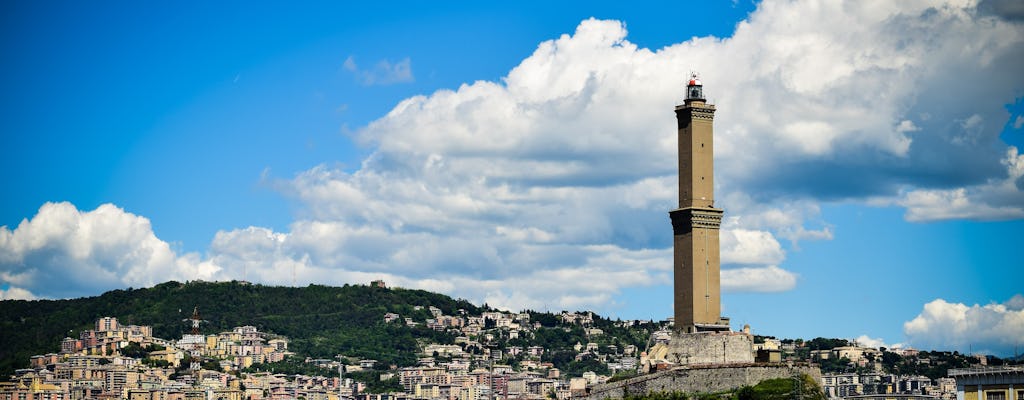


The Lantern of Genoa is a massive stone tower lighthouse, of medieval origin, symbol of the city, with fortifications and a museum.

The first tower, according to some unofficial sources, dates back to the Middle Ages (1128) and was characterized by an architectural structure formed by three superimposed crenellated trunks. Unfortunately there is no official confirmation since the documents of the 11th century, the first chronicles and the official documents of the nascent Genoese municipality provide reliable data on the signal tower, but not its exact date of construction. At the top, bundles of dry heather ("brugo") or broom ("brusca") stalks were lit in order to signal approaching woods, in order to signal approaching ships, whose owners had to pay a fee " pro igne making in capita lighthouses "at the time of landing.

The tower stood along the connecting road between Genoa and the west, the so-called Via di Francia, which flanked the port arch and the Promontory, on the last offshoot of the coast of Sampierdarena, then a holiday resort, overlooked by numerous palaces. and noble villas.

At the time the road was probably overlooking the sea and passed the lighthouse to the sea; the graphic representations of the road instead describe it in a more recent guise, certainly not prior to the 17th century, passing inside the lighthouse through the so-called "tagliata", a deep trench dug upstream of the Lanterna.

In terms of urban planning, the Lantern was at that time relatively far from the city, and only in the seventeenth century was it incorporated into the so-called seventeenth-century circle, the mighty circle of walls almost nineteen kilometers long around the city, almost entirely still existing today.

The tower became the protagonist of the war between Guelphs and Ghibellines, when it was damaged by the latter who tried to bring down the Guelphs who had taken refuge inside.

It was 1318 and, three years later, in 1321, a first consolidation was carried out by digging a moat for defense. In 1326 the first lanterns powered by olive oil were installed in both lighthouses, to help the ships to identify the entrance to the city.

The first graphic representation of the making of Capo Faro dates back to 1371 (at least among those that have come down to us), present on the cover of the parchment entitled Manual of the Salvatori del Molo and del Porto. Around 1400 the tower also became a prison to host as hostages, for five years, the king of Cyprus, Giacomo di Lusignano, imprisoned here with his wife.

To better identify the Lantern with the city, in 1340 the coat of arms of the Municipality of Genoa was painted on the top of the lower tower, the work of the painter Evangelista of Milan.

In 1405 the guardian priests of the Lantern placed a fish and a golden metal cross on the dome, a symbol of Christianity and in 1413 a decree of the "Sea Consuls" allocated a fund of "36 lire" to ensure the management of the lighthouse, which has now become essential for the safety of navigation.

Lantern of Genoa
Address: Rampa della Lanterna, 16126
Phone: +390108938088
Site:
http://www.lanternadigenova.it/Location inserted by
Veronica Simeoni